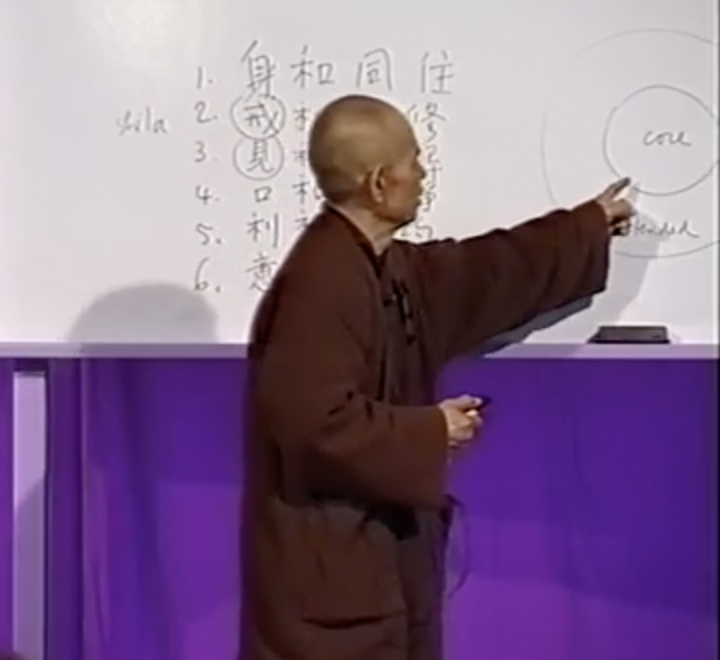Mettez-vous hors ligne avec l'application Player FM !
How do we Practice as a Sangha
Manage episode 282885889 series 1565286
2000-06-03 (77-minutes) – It’s been a long while since posting a dharma talk for you all, and for that I apologize. Today for our Day of Mindfulness at Deer Park Monastery, we heard this talk from June 3, 2000 at New Hamlet, Plum Village. The talk is part of the 21-Day Retreat that year with the theme of Eyes of the Buddha.
For this talk, we take a deep dive into what it means to be sangha. Some of what Thay shares is for the monastic sangha, but can be equally applied to a lay community. Right out front, Thay says the very minimum number for a sangha is four people. He then proceeds to outline the steps for the Sanghakarman Procedure.
From this presentation, the rest of the talk focuses on the Six Togethernesses. A real sangha must practice all six.
- Body. Being physically present in one place.
- Mindfulness Trainings
- Sharing. Dharma discussion. Nonverbal action. Presence. (View, insight, understanding, wisdom)
- Speech. Loving speech. Calm and gentle.
- Material resources are shared equally
- Happy and joyful. Synthesis of all ideas.
Toward the end, Thay explains the difference between the core sangha and the extended sangha.
I hope you enjoy the talk.

300 episodes
Manage episode 282885889 series 1565286
2000-06-03 (77-minutes) – It’s been a long while since posting a dharma talk for you all, and for that I apologize. Today for our Day of Mindfulness at Deer Park Monastery, we heard this talk from June 3, 2000 at New Hamlet, Plum Village. The talk is part of the 21-Day Retreat that year with the theme of Eyes of the Buddha.
For this talk, we take a deep dive into what it means to be sangha. Some of what Thay shares is for the monastic sangha, but can be equally applied to a lay community. Right out front, Thay says the very minimum number for a sangha is four people. He then proceeds to outline the steps for the Sanghakarman Procedure.
From this presentation, the rest of the talk focuses on the Six Togethernesses. A real sangha must practice all six.
- Body. Being physically present in one place.
- Mindfulness Trainings
- Sharing. Dharma discussion. Nonverbal action. Presence. (View, insight, understanding, wisdom)
- Speech. Loving speech. Calm and gentle.
- Material resources are shared equally
- Happy and joyful. Synthesis of all ideas.
Toward the end, Thay explains the difference between the core sangha and the extended sangha.
I hope you enjoy the talk.

300 episodes
Tous les épisodes
×Bienvenue sur Lecteur FM!
Lecteur FM recherche sur Internet des podcasts de haute qualité que vous pourrez apprécier dès maintenant. C'est la meilleure application de podcast et fonctionne sur Android, iPhone et le Web. Inscrivez-vous pour synchroniser les abonnements sur tous les appareils.




